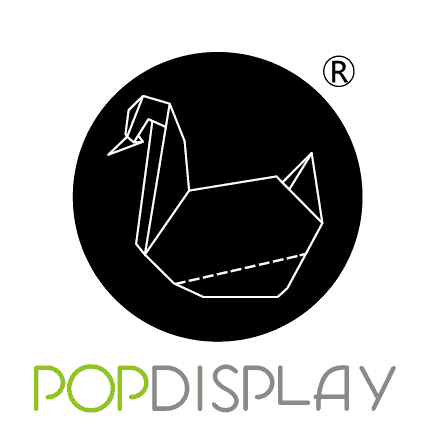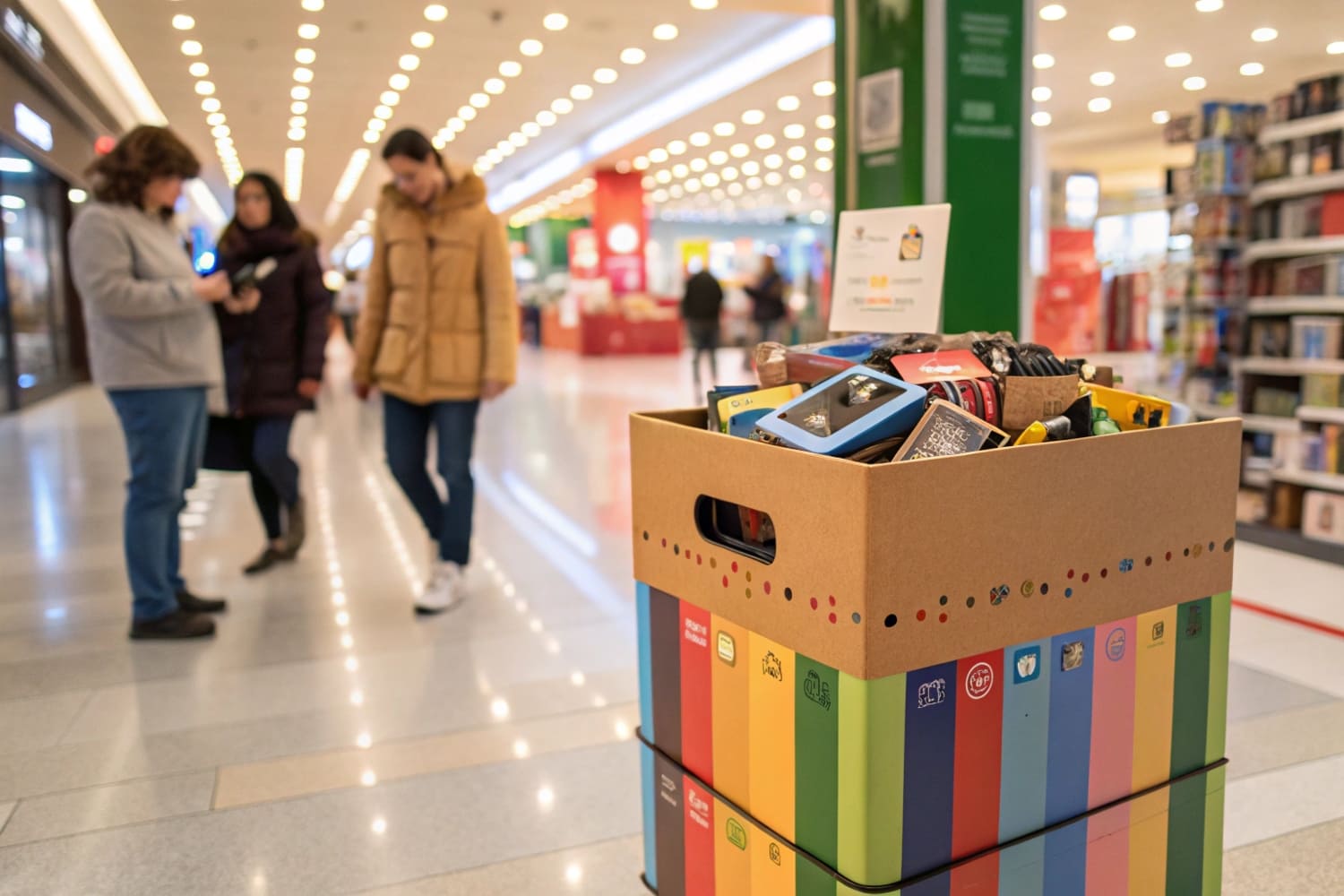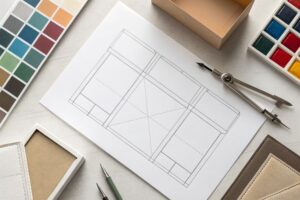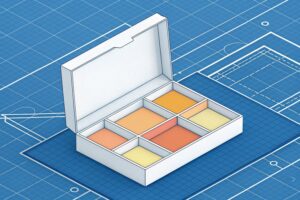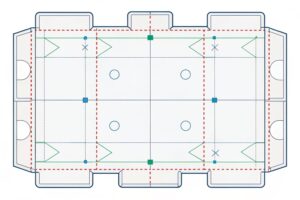Many buyers face tight timelines and mixed specs. Choices feel messy. I keep it simple with clear styles and proven strength.
We offer square, octagonal, and round corrugated dump bins in quarter-, half-, and full-pallet footprints, plus mini countertop bins. Options include sleeves, dividers, headers, toppers, moisture-resistant coatings, reinforced corners, and double-wall heavy-duty builds.

I run PopDisplay in Shenzhen. My team designs, tests, and produces for the U.S., Canada, the U.K., and Australia. I use fast samples and clear load targets, so buyers lock plans early and hit launch dates.
What are dump bins in retail?
Shoppers move fast. Stores need bold floor displays that sell without staff nearby. Dump bins do this job with simple structure and strong branding.
A dump bin is a free-standing cardboard container that holds loose or packaged items for impulse sales; it ships flat, sets up fast, prints edge-to-edge, and supports easy restock and quick teardown.
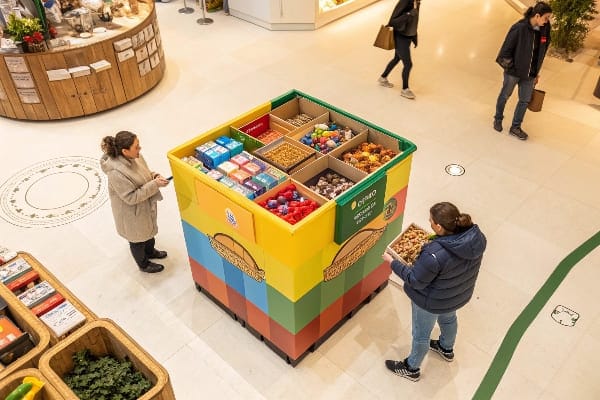
Core components
I design each bin with four parts: body, base, header, and optional sleeve. The body carries the load. The base spreads weight on the floor or pallet. The header gives brand space at eye level. The sleeve lets a retailer swap art without changing structure. I choose E-, B-, or BC-flute boards based on weight and print needs. Water-based inks keep color clean. FSC materials1 support compliance for major chains.
Strength and materials
I match wall type to product. Single-wall fits snacks and soft packs. Double-wall fits tools, bottles, or heavy seasonal goods. I add corner posts or die-cut ribs when dynamic loads are high. I use matte or gloss varnish for scuff control. I add moisture-resistant spray for entry areas.
Key build map
| Part | Purpose | Typical choice |
|---|---|---|
| Body walls | Carry load | B/BC flute, double-wall |
| Base plate | Spread weight | Extra layer + locking tabs |
| Header | Messaging | 3mm foamboard or corrugate |
| Sleeve | Fast graphic change | 300–400gsm artboard |
What is a dump bin?
Many teams ask if a dump bin equals a floor display. The short answer is yes, but with open-top access and bulk placement. That access drives quick grabs and fast stock turns.
A dump bin is a floor-standing, open-top display built from corrugated board; it stores and presents bulk items for impulse purchase and fast promotion cycles in high-traffic zones.
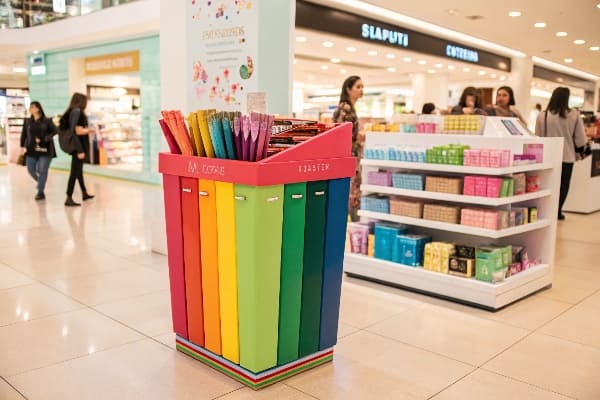
Shapes and footprints
I pick shape by aisle layout. Square and rectangular bins push tight to walls. Octagonal and round bins invite 360° access near end caps. I size to pallet logic: quarter-pallet for narrow aisles, half-pallet for standard supermarkets, full pallet for clubs. Headers clip on for height rules. Die-cut windows show product color and texture.
Pros, limits, and fixes
A bin wins on cost, speed, and branding. The limit is durability under rough restock2. I fix this with better board grade3, wrap-around sleeves, edge guards, and clear max-load marks. I also pre-crease folds for faster, cleaner setup. This reduces damage and keeps shape over long weekends.
At-a-glance guide
| Shape | Best spot | Edge strength | Print impact | Typical use |
|---|---|---|---|---|
| Square | Walls, corners | High | Large panels | Chips, candy, accessories |
| Octagonal | End caps | Medium | 360° wrap | Seasonal mixed items |
| Round | Center islands | Medium | Smooth art | Toys, balloons, soft packs |
| Rectangular | Narrow aisles | High | Long sides | Bottles in trays, tools |
What is the dump process in retail?
Good bins fail when process fails. Teams skip specs or pack late. I prevent that with a clear checklist and load tests before mass production.
The dump process covers design, kitting, flat-pack shipping, in-store setup, stocking, daily replenishment, compliance checks, and end-of-life recycling; each step has an owner, timing, and proof.
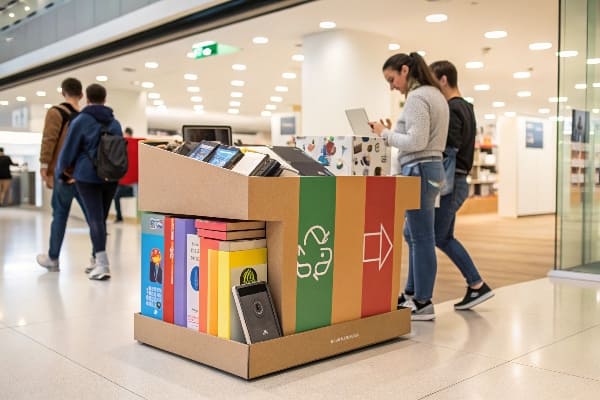
Step-by-step that hits deadlines
I start with a brief: footprint, SKU count, target units, and load per layer. My team sends a 3D render4 in 24–48 hours. We build one physical sample and test stacking, drop, and push forces. I add a QR on the bin with a 60-second setup video. I pack each kit with printed instructions, spare clips, and pre-labeled dividers. I mark max fill lines to stop overloading. I set a review call one week after launch to lock changes for the next wave.
Ownership table
Clear owners keep the plan on time. Buyers approve art. My factory locks die-lines. The 3PL hits the delivery window. Store staff set up in minutes with no tools.
| Step | Owner | Output |
|---|---|---|
| Brief + die-line | Buyer + Factory | Approved structure + 3D |
| Sample + tests | Factory | Pass report + tweaks |
| Kitting + pack list | Factory | Flat-pack kits + guide |
| Delivery + check-in | 3PL | On-time arrival proof |
| Setup + fill | Store team | Photo of final display |
| Refill + audit | Store lead | Daily count + quick fixes |
| Teardown + recycle | Store + Recycler | Baled board, clean floor |
What is a dump bin used for?
Retailers use bins when they need fast turns. They push seasonal goods, trial packs, or clearance lines. Good bins create a simple path from glance to grab to basket.
A dump bin drives impulse buys, seasonal features, trial launches, cross-merch bundles, and clearance pushes; it places product in reach, uses bold graphics, and keeps refill simple for staff.
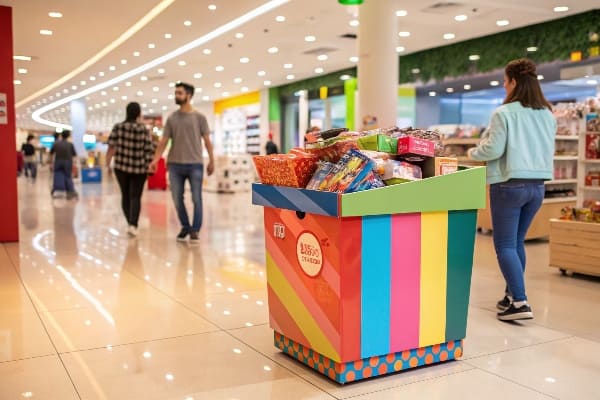
Use cases that pay back
I choose goals first, then structure. For impulse near checkout, I use a quarter-pallet bin5 with high header and narrow mouth to slow spills. For new launches, I add a hero panel and a demo tray. For heavy items like tools, I split the cavity with corrugated cells and a reinforced base. I set unit targets per day, not per week, so staff refill before the after-work rush. I track lift with a simple counter: baseline shelf sales versus bin sales. I keep art simple: one claim, one price, one brand block.
Design map by goal
| Goal | Placement | Structure choice | KPI to watch |
|---|---|---|---|
| Impulse | Checkout, queue | Quarter-pallet, narrow opening | Units per hour |
| Seasonal | End cap, foyer | Half-pallet, high header | Sell-through by date |
| New launch | Aisle entry | Octagonal, 360° wrap graphics | Trial rate, repeat |
| Heavy goods | Tool aisle | Double-wall + cell dividers | Damage rate, returns |
| Clearance | Back aisle | Simple square, bold price sleeve | Days to zero inventory |
A quick story from my floor
I once supported a hunting-tools rollout with tight timing. The buyer needed strong bins and clean graphics. We tested a double-wall body6 with corner posts and a full sleeve. The bin passed stacked-pallet transit and a store push test. The team hit the launch date. The store saw fast lifts in the first weekend. The structure stayed straight. The art stayed clean. The buyer reordered with only a header change.
Conclusion
We carry simple, strong dump bins that set up fast, print clean, and sell hard. I match shape, size, and strength to your goals, deadlines, and budgets.
Learn about FSC materials and their role in promoting responsible forestry and sustainability in packaging. ↩
Explore this link to learn effective strategies for enhancing product durability during restocking, ensuring your displays remain intact. ↩
Discover how using a better board grade can significantly improve packaging strength and longevity, making your products more resilient. ↩
Understanding 3D renders can enhance your design process and improve product visualization. ↩
Explore this link to understand the benefits and applications of quarter-pallet bins in enhancing retail sales. ↩
Learn about the durability and effectiveness of double-wall bodies in retail environments to improve product presentation. ↩
